Buried Treasure
How do you choose a subject for modeling? How do you find meaning in a subject beyond surface appeal?
Sorting through my photo collection, unearthed the following treasures. All of them are poor by today’s high resolution digital standards but what follows are a series of photos shot from the front porch and yard of my childhood home and the nearby grade crossing at Spruce Street. I thought that I had never made a lot of specific images of the siding to Thoroseal and was thrilled to discover these. Let’s have a look.
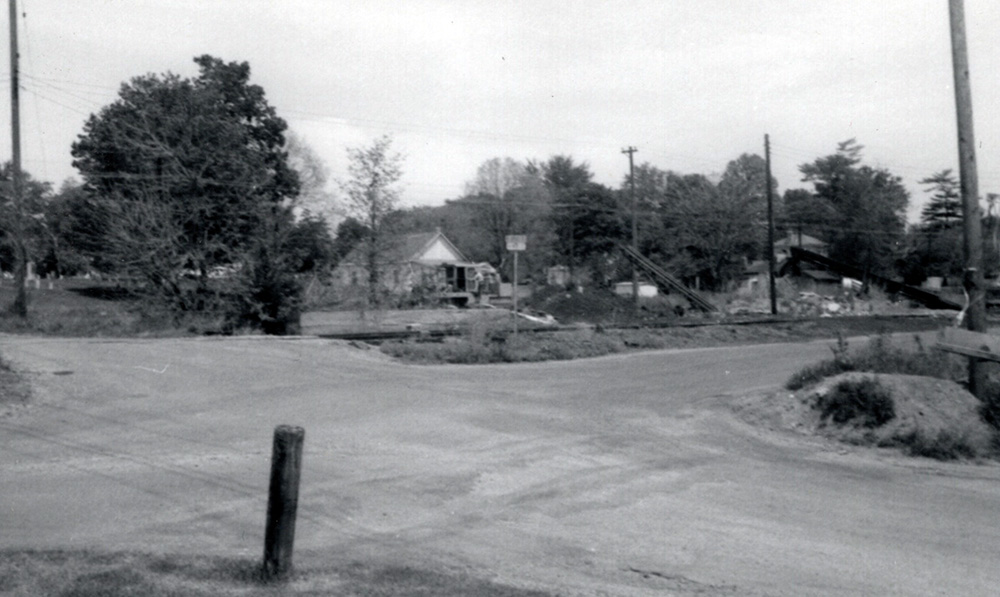
If you look closely, you’ll spot a piece of maintenance equipment on the mainline just underneath the white gable of the church building in the background. Memory fails me but I suspect it was the reason I shot this photo.
Here you can see how Water Street ran between the two sidings. That’s the edge of our front yard with the post in the foreground.
The Penn Central motive power dates this image somewhere after 1968 or the early 1970s. Even at this late date, you will notice the two portable conveyors and the coal pile. Behind the siding next to Spruce St. is the old section house foundation. In the far right foreground, the end of the elevator siding is buried in the weeds where it terminates at the edge of Spruce St. A rough dirt pile did little to stop a stray car.
On another day, the photo below shows an eastbound freight about to cross Morton Ave. The local would spot a covered hopper on the siding for unloading via a conveyor into a flat bed farm truck that simply pulled up and parked on the edge of street. Here you see the light colored cargo spillage from that operation
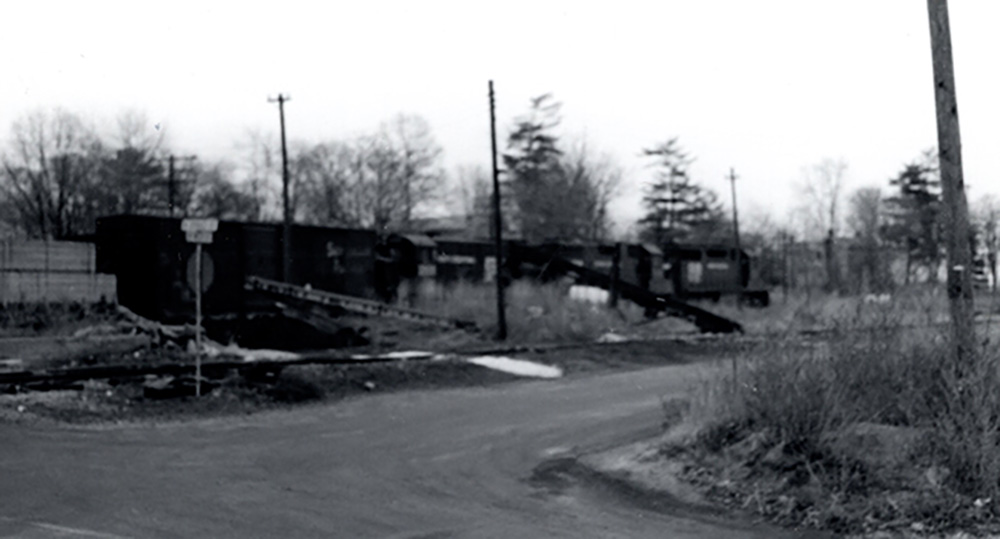
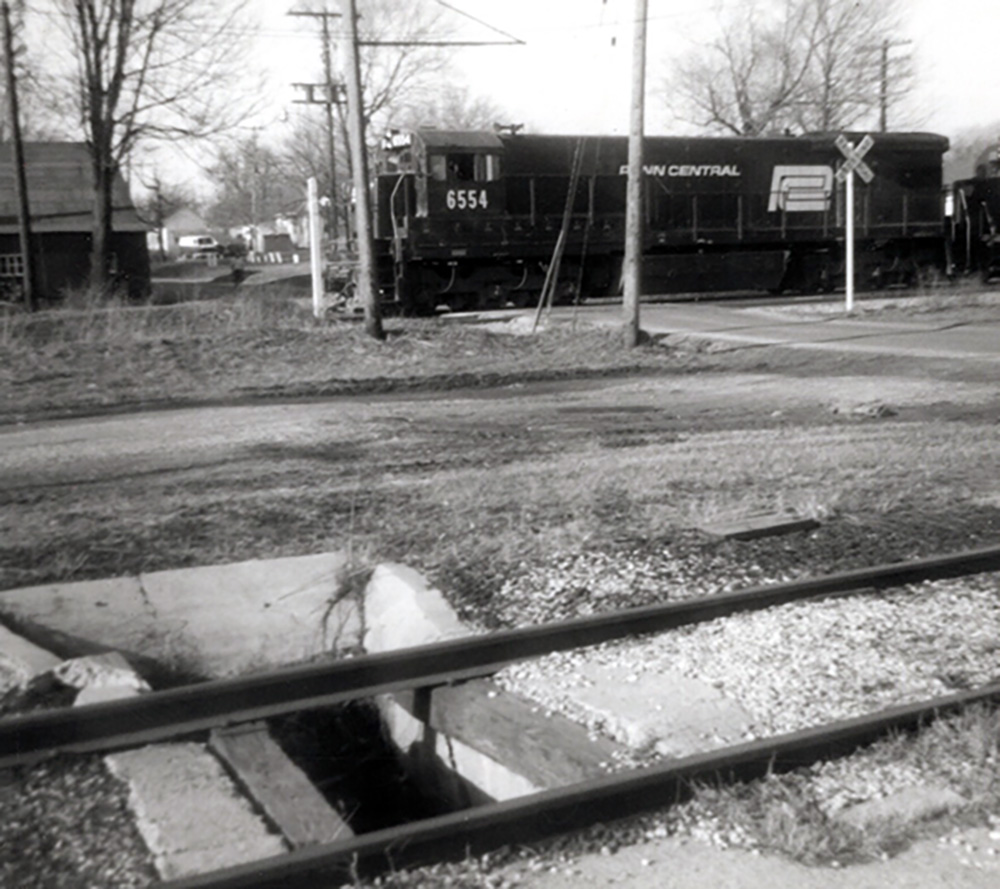
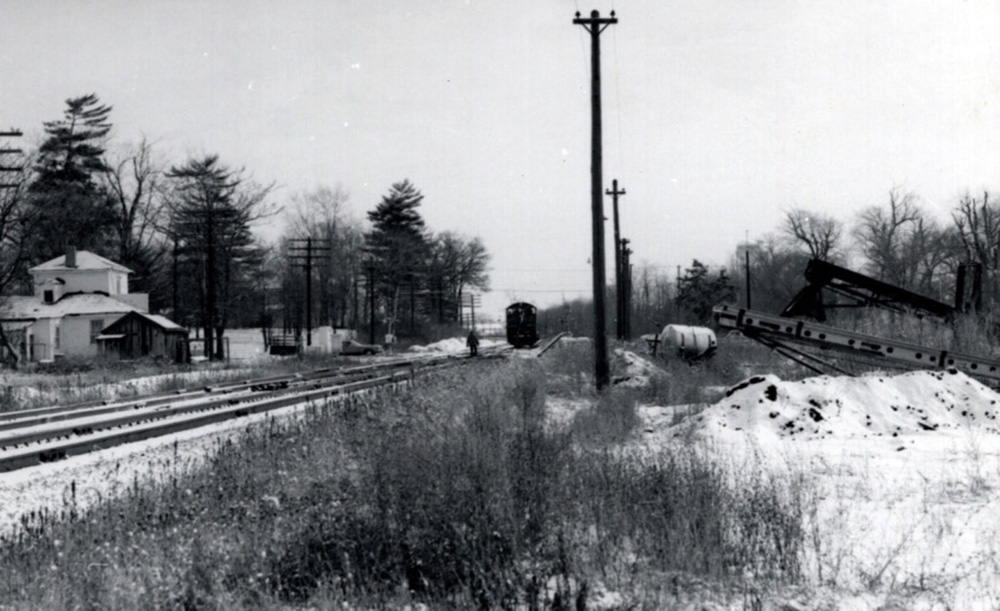
Looking east on the main from Spruce St., the yard engine is getting ready to do his work. My grandmother’s house is on the left and the site of the old depot was in the open area on the right next to Morton Ave.
(Below)
I was told this was the original 1850s depot. I received this photo from someone and don’t know who the photographer was or when it was taken. This is the west wall and the gondola car is parked on the Thoroseal track. The ink marks are someone’s attempt to scale the building. The depot was abandoned in my time and finally torn down in the late 1960s.
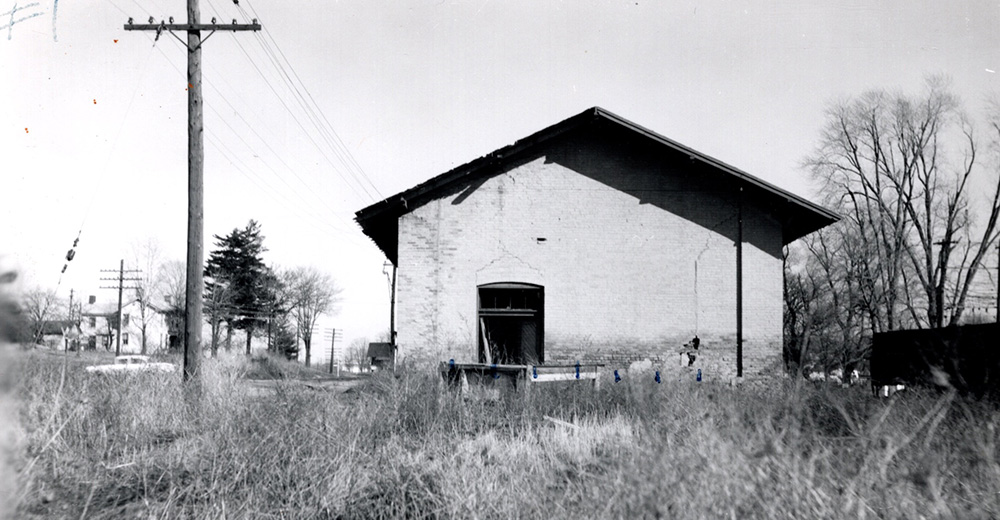
(Below)
Through traffic was heavy during the ’60s. With the advent of Conrail in the mid ’70s things began to change as freight traffic was rerouted to more profitable lines up north. By the early ’80s the handwriting was on the wall, as facilities like the crossover were cut back. By 1983 it was all gone.

Making Meaning
Let’s go back to the opening questions again.
Many of us have trouble choosing what to model. How do we know if our choices will be satisfying or worth the time and effort put into them? The truthful answer is we don’t.
We want a guarantee in advance that a given design will provide long-term satisfaction but, it’s an empty promise that seldom delivers. Hobby thinking places a lot of emphasis on specific places that feature a ton of railroad action or picturesque settings. We’re led to believe that the magic we seek is in the physical attributes of a place. Just find the right prototype or freelanced mashup and you’re set.
There was nothing special about Centerville. In the 1960s it was one of thousands of small towns across the land where the railroad still had a role to play. It was truly an ordinary place that had little to offer of the things the current hobby culture deems valuable or interesting.
My connection to this place was forged over decades of day-to-day encounters with the railroad. Living next to the tracks produced a familiarity that flowed like the unspoken comfort of old friends who accept each other for who they are. Had we lived farther away, my relationship and memories of the railroad would have been vastly different.
Looking through these photos and many others I’ve shared, you’ll see the signature aspects of my modeling today: old track, tall weeds and slow operations experienced up close and personal. They were familiar on a deep level of experience over time and found fertile soil in my heart. These qualities also hold a universal appeal for many and are not restricted to a specific place or time. The way these qualities speak and hold my attention provides the meaning and direction to the modeling
This hobby loves to offer prescriptive solutions for everything. We are drowning in just do this or buy that and everything will be fine advice. Prescriptive thinking however, seeks to answer the unanswerable, yet often comes up short. In my view, this is why many of us feel so frustrated and stuck in place from thinking the answers are somewhere outside. In truth, the answers we seek are often found in a thoughtful examination of what draws you to trains. That’s something we’re not encouraged to do in the pragmatic just get it done approach often used for modeling and layout design.
We filter the world through the lens of our experience, temperament and world view. My own lens developed over time and while the image of the craft I see through it is clearer, it isn’t finished by a long shot. That’s the joy of a creative journey.
Regards,
Mike
0 Comments